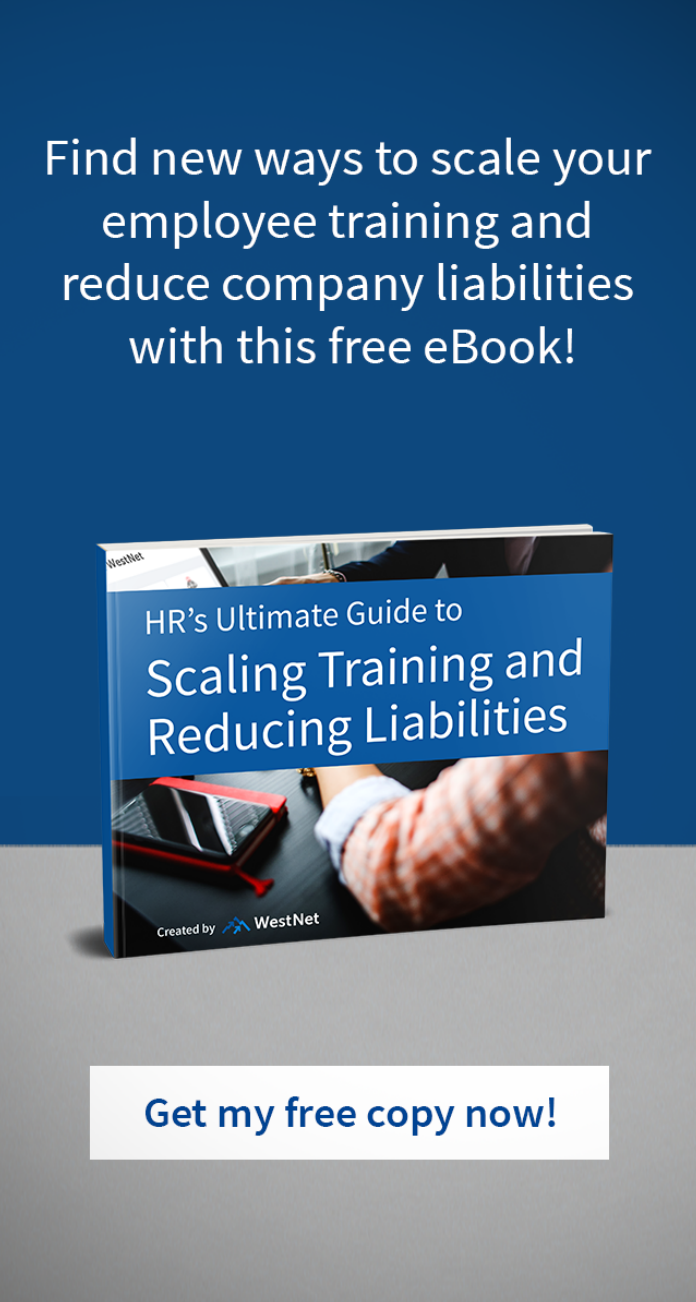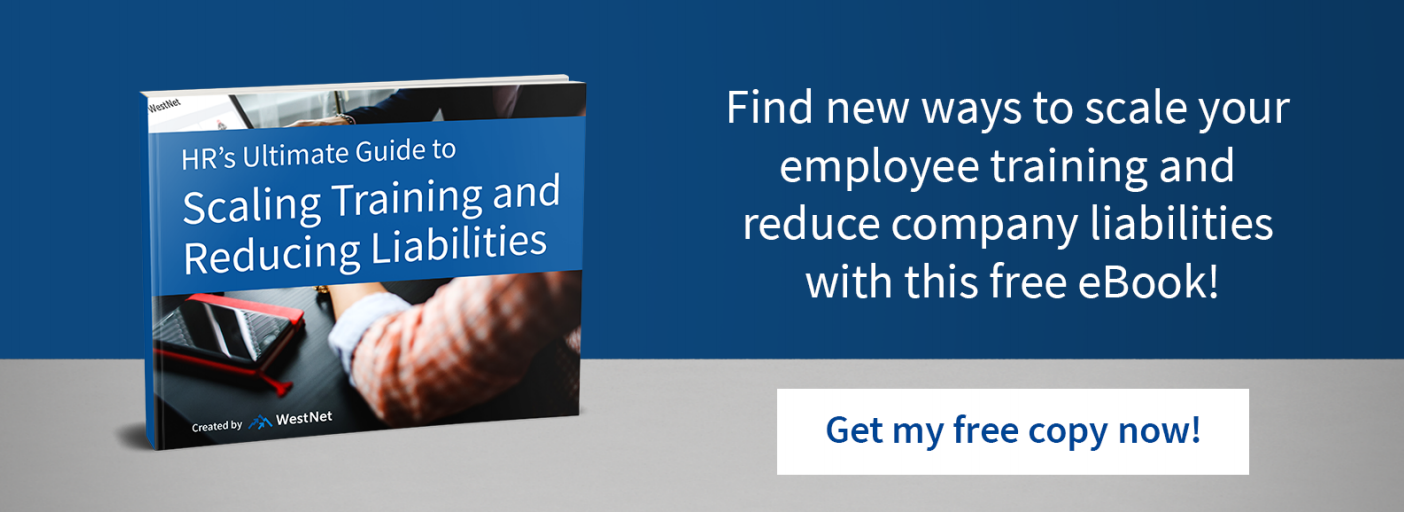Companies today face a myriad of risks and are subject to company liability not only based on what senior leaders do but also based on actions by managers, supervisors and all employees. The best defense is a good offense and that’s where an effective and ongoing training program can help. Here’s a look at some of the areas of greatest potential company liability and how you can guard against them.
Sexual harassment claims
Sexual harassment has long been an area of concern for companies of all types and sizes. But, the recent added attention given to the issue stemming from some high-profile sexual harassment claims and the #MeToo movement has moved this issue front and center on the radars of HR and business leaders—and employees. Organizations are widely recognizing the need to be proactive in terms of educating and training managers—and all staff—about their policies, reporting processes and no-tolerance approach to harassment in the workplace.
According to an XpertHR post, “The District of Columbia is the latest in a growing list of jurisdictions that are requiring employers to train not just supervisors when crafting sexual harassment prevention programs, but employees as well.” It’s a good move.
Jonathan Segal, an attorney writing for the Society of Human Resource Management (SHRM), offers a number of tips for anti-harassment training. They include:
- Ensure that training is interactive and facilitated by a qualified trainer
- Confirm that support comes from the highest levels
- Provide specific examples of unacceptable behaviors as opposed to making generate statements
- Train supervisors to respond proactively to unacceptable conduct
- Emphasize non retaliation
- Evaluate and reevaluate the effectiveness of your training efforts
Organizations can reduce company liability by being proactive in terms of educating and informing all staff members about what constitutes sexual harassment, and ensuring that employees feel comfortable bringing issues forward in an environment that is non-punitive.
Safety risks
Every organization faces various risks, from an employee safety standpoint, ranging from on-the-job accidents related to the type of work an employee performs, to risks from outside forces like disgruntled customers, family members, and others. While farm and manufacturing environments are more prone to a wide range of risks, no organization is immune from threats of safety to employees. Consequently, it’s critical for all organizations to assess these risks and provide information and training to employees to both protect employees and to reduce company liability.
In a blog post, Julie Copeland, CEO of Arbill, a company that focuses on workplace safety, provides some tips to ensure optimum effectiveness of training efforts. They include:
- Monitoring employee behaviors after training to ensure they are applying what they’ve learned
- Update policies and procedures regularly and ensure all employees are updated
- Use safety incidents as an opportunity to reinforce safety messages, and update policies and procedures as appropriate
- Maintain open communication channels so employees feel comfortable sharing feedback
- Ensure that all employees receive training that is specific to their work settings and the type of work they do
Employee safety risks can take a variety of forms which can vary from organization to organization. Assessing and prioritizing the risks faced by your employees is an important first step to ensuring that the appropriate training and education is provided.
Theft and fraud
While retail companies may be the first that come to mind in terms of being at risk of theft and fraud, the truth is that all organizations face such risks—both from external (customer, vendor, etc.) and internal (employees themselves). In fact, according to an article in Financier, “Corporate fraud is a global scourge costing hundreds of billions per annum.”
Employees can help to prevent theft and fraud if they know what to look for. Unfortunately, employees can also be culprits. Training can help ensure that employees are educated to be aware of these risks and their role in preventing them, and supervisors and managers know what they need to watch for.
Risks to customer data and privacy
As consumers engage more frequently in all types of online transactions and activities—from purchasing products, to banking and communicating with healthcare providers, risks to customer data and privacy are increasing. High-profile security breaches impacting companies like Facebook, Macy’s, Marriott and others have all companies on the alert for ways to reduce company liability related to customer data and privacy.
In 2018, one of the big areas of focus for most companies was the General Data Protection Regulation, or GDPR, a regulation emerging in the European Union (EU), but affecting any company collecting data on individuals in the EU—and not just customers and consumers, data collected on a company’s own employees is also subject to these regulations.
While technology may seem to be the most appropriate area of focus for reducing company liability related to data and privacy, the biggest area of risk are your own employees! That impact is often unintentional, or accidental. Ensuring that employees are trained and educated about their role in protecting company data is a must do for all organizations.
Actions by managers – related to FMLA, NLRA, and other laws and regulations
The larger the company, the more it faces potential risk from the actions of employees—most notably employees who are in supervisory or management positions. Their acts, or inaction, can lead to a wide range of potential risks, and costly lawsuits. Your supervisors and managers act on your behalf on a daily basis. Arming them with the timely information and resources they need to ensure that their actions are reducing company liability can be a good line of defense to avoid the risks of claims and costly litigation.
How an effective LMS can help
Training is obviously important as a means of reducing company liability. To be most effective, though, training must be comprehensive, ongoing, and continually evaluated to ensure it is having its desired effects. This can obviously be challenging for HR and business leaders. As we’ve covered here, there are a number of areas of risk that companies are exposed to, continually evolving rules and regulations that need to be monitored, many administrative activities that must be done on an ongoing basis, and continually shifting participants as new hires come on board and employees are promoted into supervisory or management positions.
This is where an effective LMS can provide significant benefit to beleaguered HR professionals and staff members, ensuring that the organization is protected against potential liability and that all employees, supervisors, managers and leadership are receiving the training they need—and are learning and applying the information delivered on an ongoing basis. The best solutions offer the ability to customize courses and information to meet individual employee needs based on location and role, certification to document and recognize course completion and award CEUs, and the ability to easily analyze progress on both an individual and organizational level.
WestNet Learning is an all-in-one, LMS solution to help growth and safety needs. Customized eCourses, analytics, reporting, and certifications help management & staff stay on top of what matters most.
To learn more and capitalize on the latest techniques in reducing your company’s liability, connect with us for a 1-on-1 walkthrough today!

